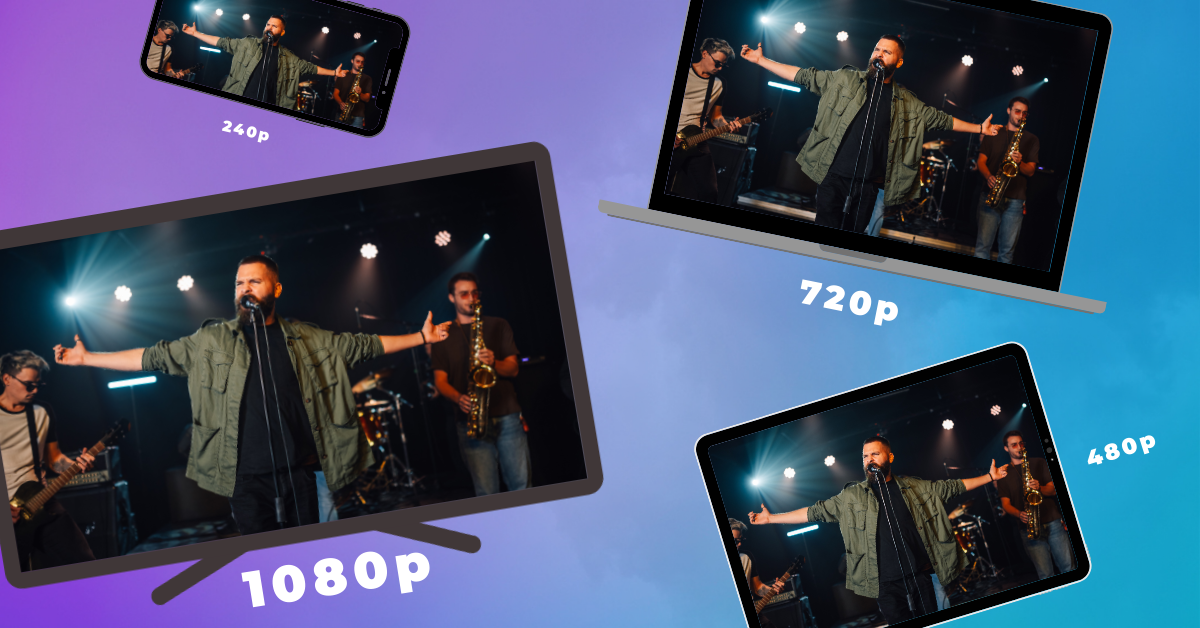VIDEO
Products
Streaming
Deliver flawless live video to any audience, anywhere
OTT Apps
Launch and monetize your own branded TV & mobile apps
Spark Encoder
Tap into hardware encoding that's compact and powerful
Broadcaster App
Go live straight from your phone or tablet with studio-quality control
Features
BoxCast Flow
Ensures smooth playback even on shaky networks
Sharing
Instantly clip, share, and amplify your broadcasts
Producer
Create professional streams right from your browser
Third-Party Encoders
Use the gear you love with our support of RTMP and SRT
AUDIO
RemoteMix
Mix live audio remotely from anywhere in the world
Compatible Mixers
Connect your favorite digital mixer to RemoteMix
INDUSTRIES
House of Worship
Reach and engage your congregation wherever they worship
Sports
Stream games with professional quality for fans everywhere
Local Government
Bring transparency and connection to your community broadcasts
Business
Power your corporate events, webinars, and live streams
LEARN
Blog
Insights, trends, and tips for the audio/video community
Tech Tips
Quick how-tos and deep dives on the latest streaming technology
Guides
Essential tips and expert strategies to expand your reach
Newsletter
Stay up to date with product news, best practices, and more
Podcast
Hear stories and strategies from our customers and experts
DISCOVER
Customer Stories
Explore real-world success stories to inspire your organization
Events
Join us at an upcoming conference and meet with our team
Webinars
Get all the details and register for our next live webinar
About Us
Discover our company's mission, values, and team story
Live Streaming Software, Audio

BoxCast Team • May 29, 2025
Live video streaming is hard to get right. Between inconsistent network conditions and the pressure to deliver a flawless viewer experience every time, broadcasters face an uphill battle — and many stumble. Fortunately, there’s a powerful tool that helps deliver professional-grade live content, even on slower or non reliable connections. It’s called HEVC cloud transcoding — and surprisingly, some live streaming providers don’t use it.
The Weight Your Stream Has to Carry
The Solution is in the Cloud
How HEVC Cloud Transcoding Translates to Your Viewers
Why Don't Some Providers Use HEVC Cloud Transcoding?
Imagine, for some wild reason, you’re tasked with moving a pile of sandbags across a football field. The bags come in different weights — 100, 75, 50, and 25 pounds — and you have to carry each bag across the field every minute, for 60 minutes, in front of a crowd of a few hundred people.
This metaphor demonstrates what your network is doing during a typical live stream. But instead of sandbags, it’s carrying your stream in different resolutions — 1080p, 720p, 480p, and 240p — all at once. Just like the sandbags, each resolution puts a different strain on your upload speed. It’s a heavy, relentless lift, and your network has to keep pace the entire time.
If it can’t keep up, viewers will notice — and they won’t stick around for long.
Simply put, cloud transcoding is the process of converting a single, high-quality video stream into multiple resolutions — in the cloud. Instead of asking your network to upload several different versions of your stream (1080p, 720p, 480p, 240p), you only need to send one high-quality stream — typically 1080p — to the cloud. From there, your cloud servers handle the rest, creating additional resolution options for viewers without taxing your local network.
Next, HEVC (also known as H.265) is a tremendously important part of cloud transcoding because it dramatically improves performance and efficiency over its predecessor, AVC (H.264). It can reduce file sizes by up to 50% without sacrificing video quality — which means significantly less bandwidth is required to broadcast. When combined with the power of cloud transcoding, this advanced compression technology makes it possible to deliver high-quality video, even over lower-capacity networks.
Back to our earlier metaphor: with HEVC cloud transcoding, you only carry just one sandbag across the field. When you get to the other side, the rest magically appear. That means instead of carrying four bags weighing a combined 250 pounds every minute, you're just moving a single 100-pound bag — and letting the cloud do the majority of the heavy lifting.
In other words, HEVC cloud transcoding makes streaming a whole lot easier, your stream much more reliable.
It’s worth pausing for a moment to state that breaking your broadcast into multiple quality levels is an absolute must for those watching your stream. This is of the utmost importance because not all of your viewers will be able to watch at your max resolution available based on limitations from their personal network or device. So providing them with multiple adaptive options to give them the best possible stream quality without buffering is essential, and it’s something that they’ve come to subconsciously expect based on years of adaptive viewing from other streaming and video platforms.
In other words, HEVC cloud transcoding makes adaptive bitrate streaming much more possible, and your viewers ultimately a whole lot happier, which is what matters most. Isn’t it?
The answer is simple: HEVC cloud transcoding is technically complex and one of the most expensive parts of delivering live video. Many streaming providers skip it to save on costs or avoid the engineering challenges required to support it at scale.
At BoxCast, HEVC cloud transcoding has been a non-negotiable from day one. We know streaming is hard — but we also know that the right technology makes high-quality, reliable broadcasts far more achievable.
We care deeply about your broadcasts and your audience. That’s why we build tools that give you the best shot at delivering your message clearly, beautifully, and efficiently — no matter what your network throws at you.
Yes, live video streaming is hard. But with BoxCast and HEVC cloud transcoding, it doesn’t have to be.
© 2025 BoxCast. All Rights Reserved. | +1-888-392-2278